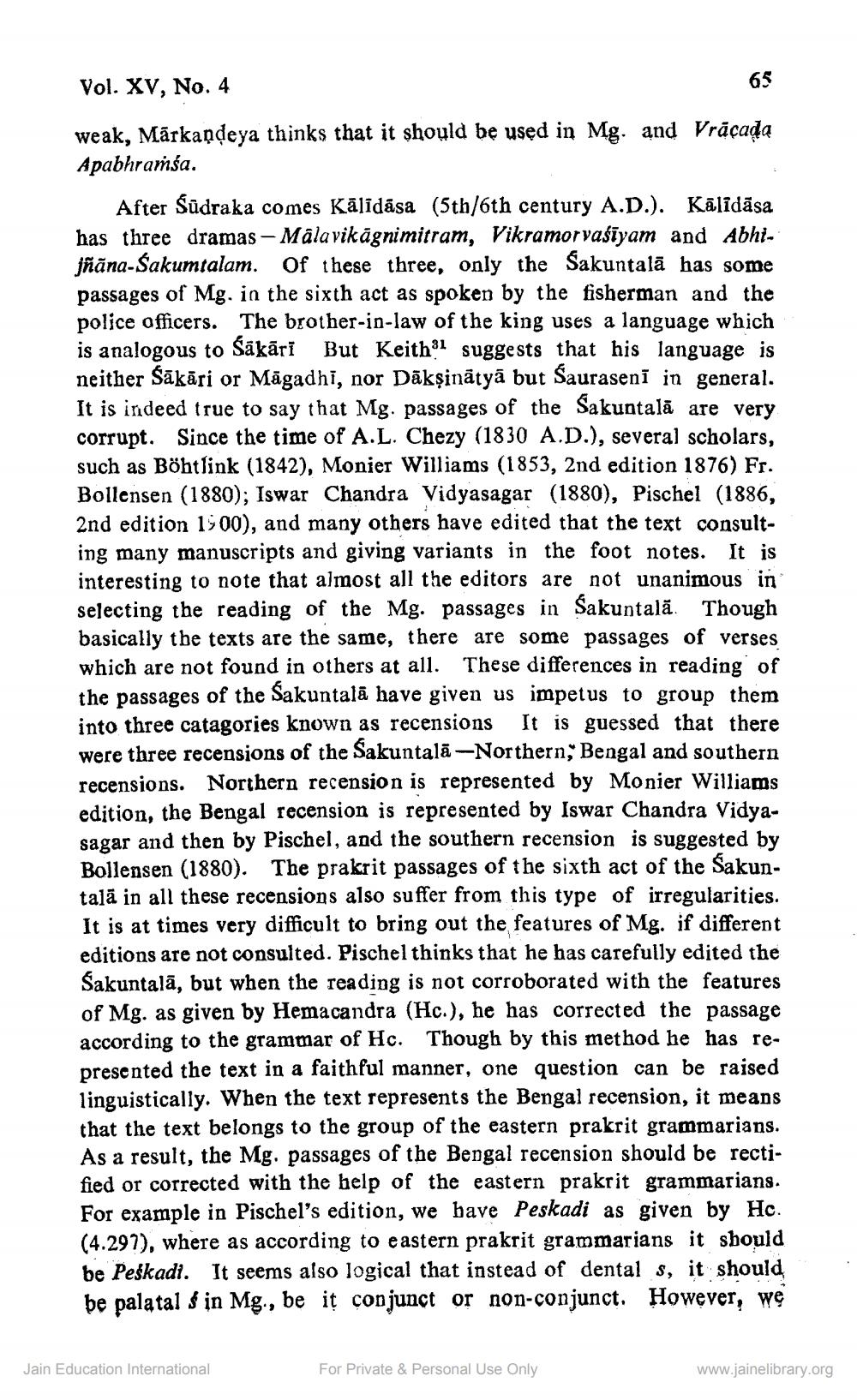________________
65
Vol. XV, No. 4 weak, Mārkandeya thinks that it should be used in Mg. and Vrāçada Apabhraíśa.
After Sūdraka comes Kālidāsa (5th/6th century A.D.). Kālīdāsa has three dramas - Māla vikāgnimitram, Vikramorvašīyam and Abhijñāna-Sakumtalam. Of these three, only the Sakuntalā has some passages of Mg. in the sixth act as spoken by the fisherman and the police officers. The brother-in-law of the king uses a language which is analogous to Säkāri But Keith suggests that his language is neither Sākāri or Māgadhi, nor Dākşinātyā but Saurasens in general. It is indeed true to say that Mg. passages of the Sakuntalā are very corrupt. Since the time of A.L. Chezy (1830 A.D.), several scholars, such as Böhtlink (1842), Monier Williams (1853, 2nd edition 1876) Fr. Bollensen (1880); Iswar Chandra Vidyasagar (1880), Pischel (1886, 2nd edition 1900), and many others have edited that the text consulting many manuscripts and giving variants in the foot notes. It is interesting to note that almost all the editors are not unanimous in selecting the reading of the Mg. passages in Sakuntală. Though basically the texts are the same, there are some passages of verses which are not found in others at all. These differences in reading of the passages of the Sakuntalā have given us impetus to group them into three catagories known as recensions It is guessed that there were three recensions of the Sakuntalā-Northern, Bengal and southern recensions. Northern recension is represented by Monier Williams edition, the Bengal recension is represented by Iswar Chandra Vidyasagar and then by Pischel, and the southern recension is suggested by Bollensen (1880). The prakrit passages of the sixth act of the Sakuntalā in all these recensions also suffer from this type of irregularities. It is at times very difficult to bring out the features of Mg. if different editions are not consulted. Pischel thinks that he has carefully edited the Sakuntalā, but when the reading is not corroborated with the features of Mg. as given by Hemacandra (Hc.), he has corrected the passage according to the grammar of Hc. Though by this method he has represented the text in a faithful manner, one question can be raised linguistically. When the text represents the Bengal recension, it means that the text belongs to the group of the eastern prakrit grammarians. As a result, the Mg. passages of the Bengal recension should be rectified or corrected with the help of the eastern prakrit grammarians. For example in Pischel's edition, we have Peskadi as given by Hc. (4.297), where as according to eastern prakrit grammarians it should be Peskadi. It seems also logical that instead of dental s, it should be palatal $ in Mg., be it conjunct or non-conjunct. However, we
Jain Education International
For Private & Personal Use Only
www.jainelibrary.org




